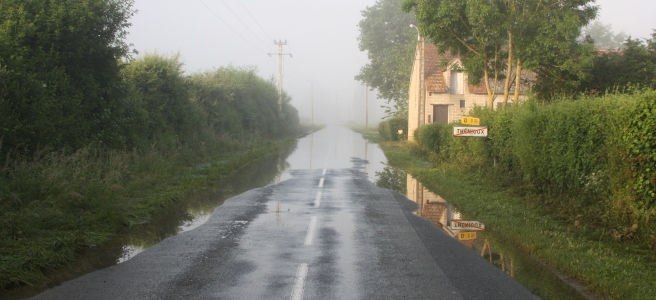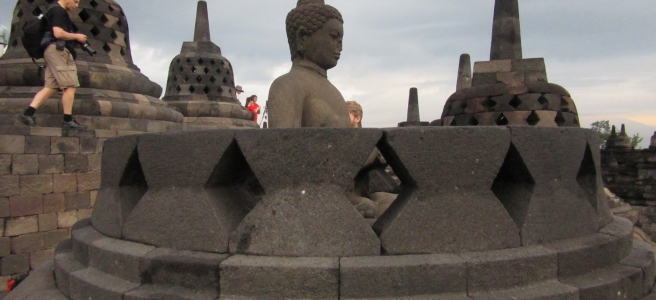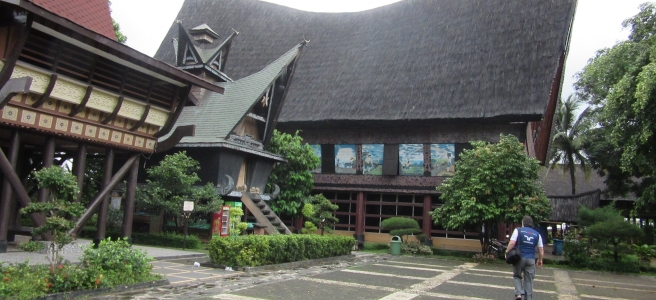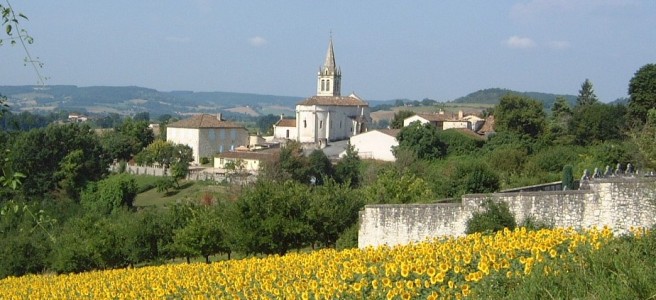You don’t expect floods in France in June. It had rained on and off for days while we were in our old house in Lot-et-Garonne, but on the 1st June it poured all day. We sat and watched the water run down the road and sometimes went outside to see if the rain was easing off. Most of the time, we sat and read. It wasn’t until the next day that we realised the consequences.
As the weather was still grey and drizzly, we drove to Villeneuve-sur-Lot, crossing the Lot on the way. The river is usually so placid it is full of reflections but, on this occasion, it was brown and foaming, overflowing into trees and footpaths along its banks. We heard on the news there had been heavy rain throughout central and northern France, sending rivers over their banks and killing at least two people. In Paris, the authorities watched with alarm as the Seine rose 6 metres above its normal levels. People protected their properties with sandbags and museums moved art works out of their cellars.
On the 6th of June, we started our trip home. We usually break our journey by spending a night in a bed and breakfast house in central France. On this occasion, we’d booked a place on the banks of the Cher near Vierzon. We left the A10 and made our way through a couple of villages, with the view of crossing the Cher on a minor road. We found a sign saying ‘Route Barree’ and beyond that, a stretch of water. We retreated, tried another couple of minor roads which were supposed to cross the Cher, with the same result, and gave up. In the end, we took the motorway to Vierzon and crossed the Cher there.
When we reached the bed and breakfast, we found another ‘Route Barree’ sign and a barrier. Fortunately this was just beyond the car park of the bed and breakfast, so we made it. The owners told us the water had reached to their drive. They had moved a couple of guests to a local hotel as a precaution, but the water didn’t enter the buildings. They also told us the water had reached 1.6 metres in the streets of the nearby town of Romorantin-Lanthenay and the President, Monsieur Hollande, had come to see for himself.
The next day, we had to get to Dieppe for our ferry. Searching the web, we found the road was blocked between Vierzon and Orleans to the north. We went west, passing Romorantin-Lanthenay on the bypass, and reaching the Loire at Blois. The Loire is an impressive river at any time, but that day, the water was near the top of the arches of a bridge downstream. Further north, we had to cross the Seine at Rouen. It looked as if the river had flooded low-lying tracks and quaysides, but stopped short of the main road.
For us, the floods were an inconvenience but it must be terrible to see your home or business filling with filthy water and be unable to do anything. So my heart goes out to all those people in France who were flooded.








